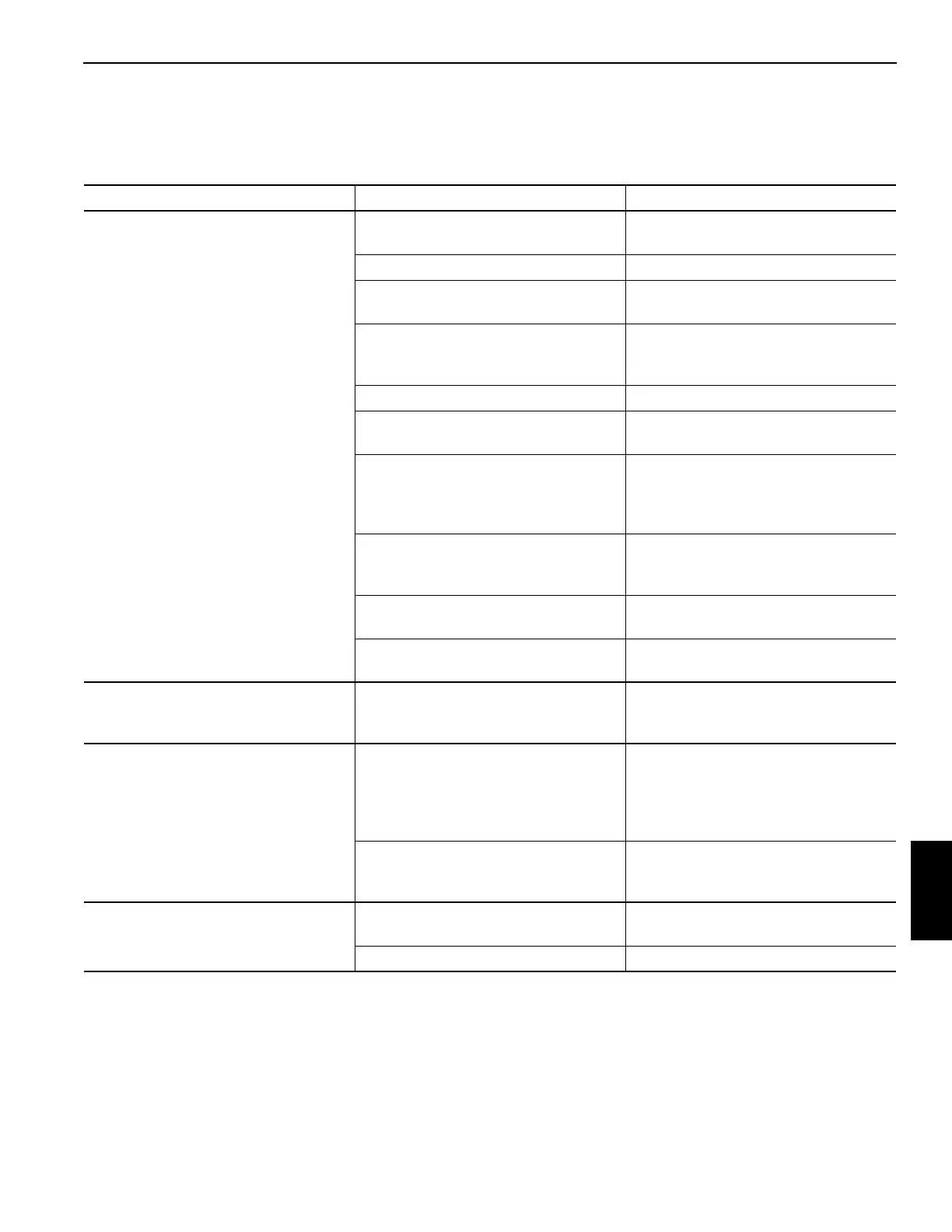Grove Published 11-22-2016, Control # 345-12 8-13
RT9130E-2 SERVICE MANUAL UNDERCARRIAGE
Maintenance
Troubleshooting
Table 8-3
General
A schedule for the periodic adjustment, cleaning, inspection,
and lubrication of brake equipment should be established by
the operator on the basis of past experience and severity of
operation.
The disc brakes are not adjustable. Brakes should be
cleaned, inspected, and linkage lubricated periodically to
assure maximum performance.
Symptom Probable Cause Solution
1. Brakes are poor. a. Lining thickness less than
0.125 in (3mm).
a. Replace lining.
b. Brake pedal operation. b. Free mechanical linkage.
c. Restriction or leaks in lines. c. Check all lines for leaks and
restrictions.
d. Low hydraulic oil flow. d. Check the hydraulic oil level in
reservoir and check flow from
the tandem brake valve.
e. Air in brake lines. e. Bleed the brakes.
f. Brake pads/linings are
grease-soaked.
f. Replace pads/linings.
g. Engine not running. g. Start engine. Due to the
operation, the engine must be
running to provide full brake
power.
h. Brake relief valve stuck open. h. Replace the relief valve. Refer
to your Manitowoc Crane
Care Parts Manual.
i. Dual accumulator charge
valve not charging
i. Check valve operation and
repair or replace valve.
j. Accumulators not pre-
charged.
j. Check accumulator pre-
charge.
2. Hard brake pedal with engine
running.
a. Pedal travel being interfered
with.
a. Check all pedal linkage and
ensure it is free and adjusted
properly.
3. Brakes lock up. a. Too much hydraulic flow. a. Check the flow from the flow
divider. Too much flow will
cause the brakes to be
applied by the oil trapped in
the power boost chamber.
b. Brake pedal push rod
improperly adjusted, causing
brakes to be always applied.
b. Adjust the push rod linkage so
the brake pedal and push rod
fully return.
4. Uneven braking or pad wear. a. Lining thickness less than
0.125 in (3 mm).
a. Replace the lining.
b. Grease on the pads/linings. b. Replace the pads/linings.
